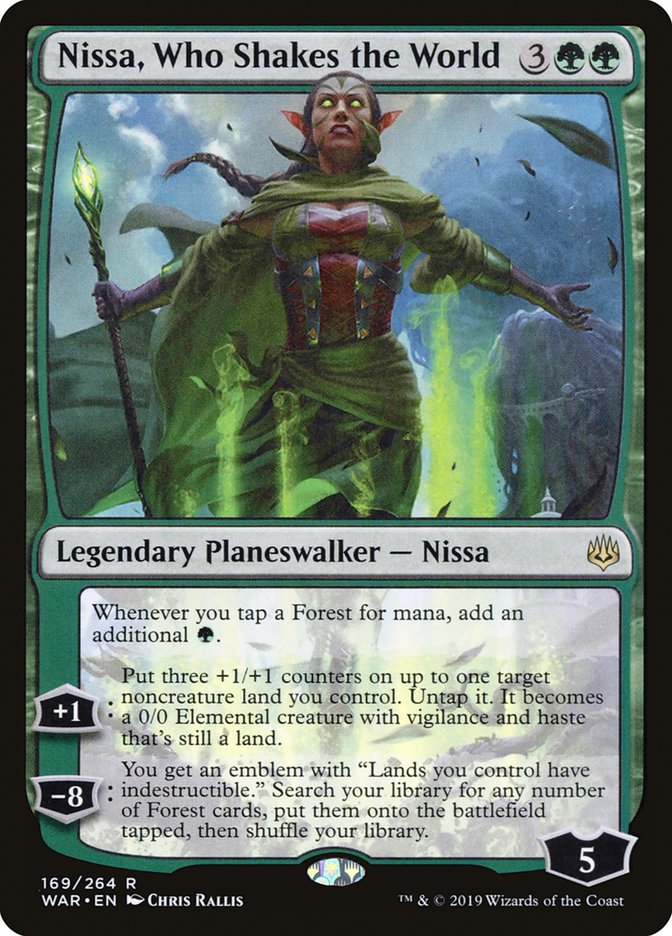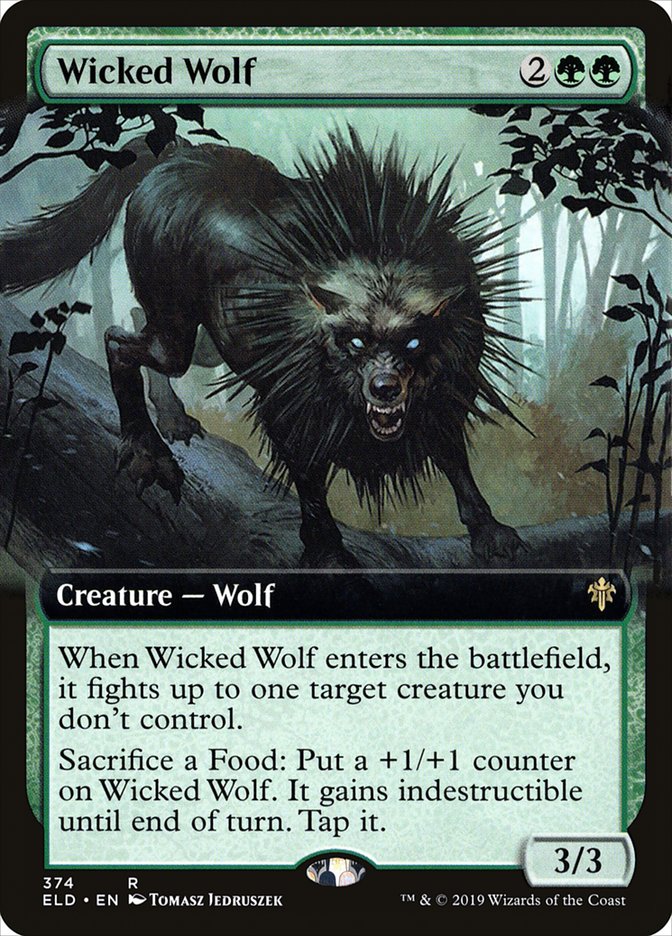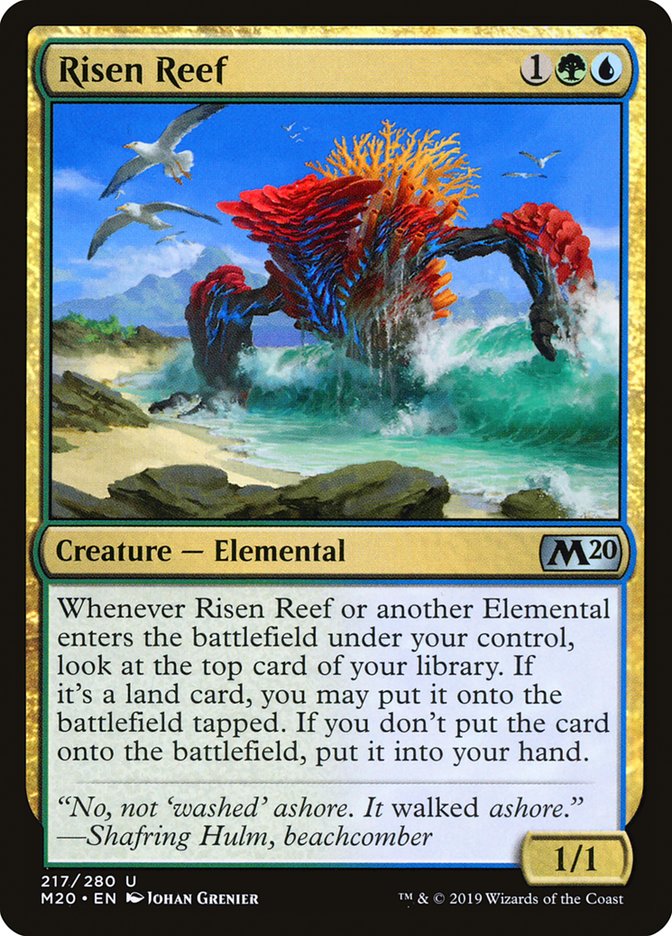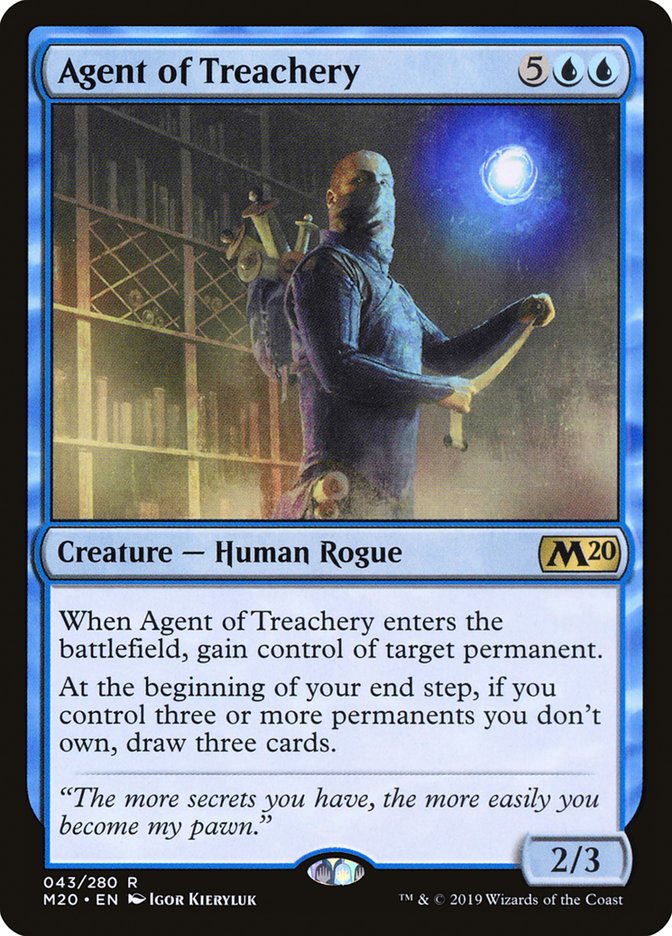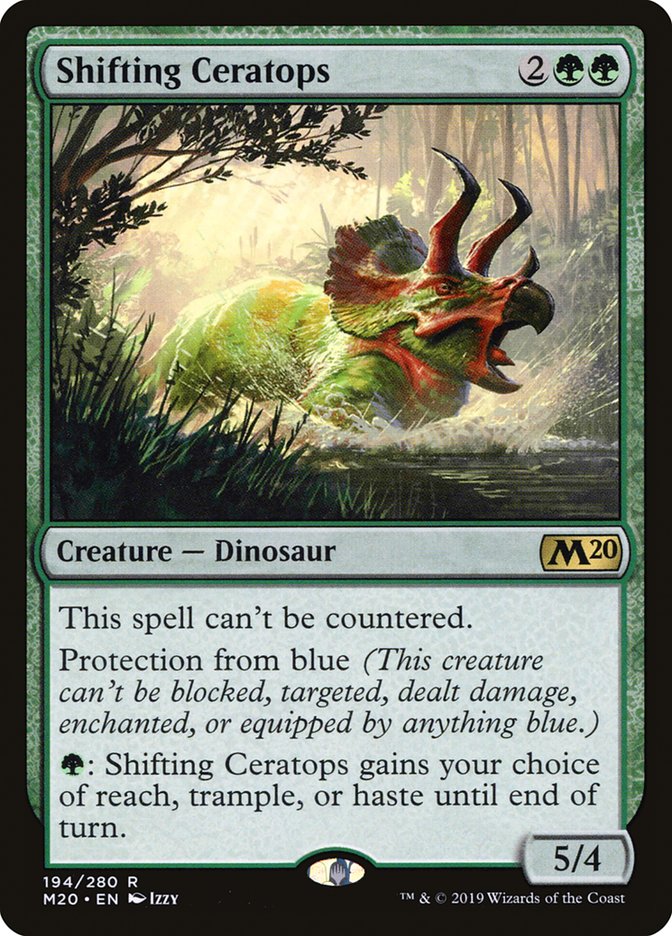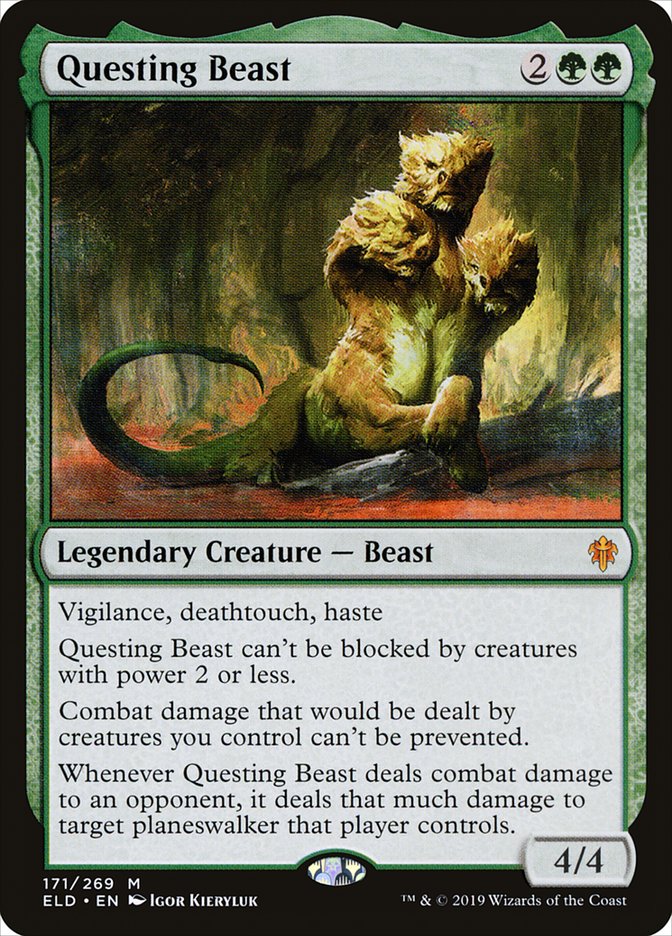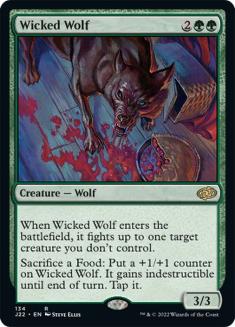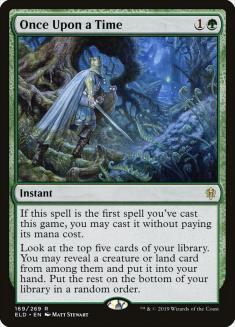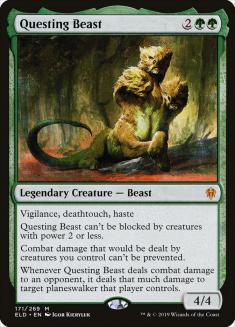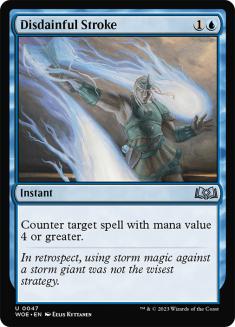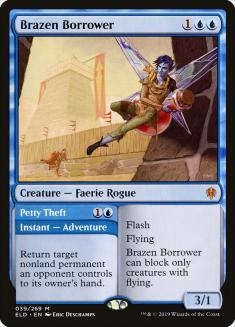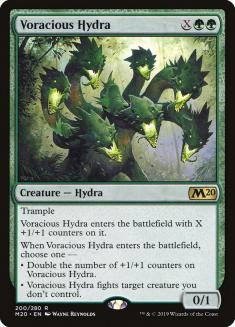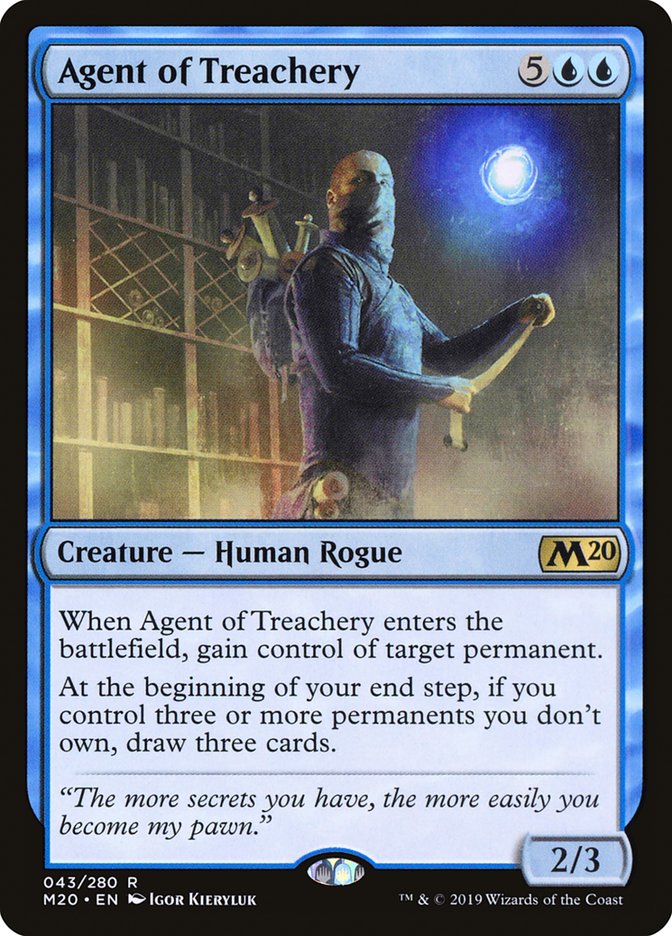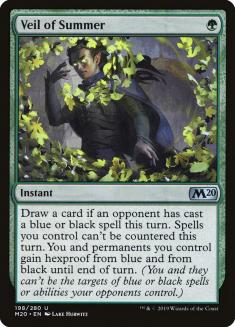If I had a Standard tournament tomorrow, I’d play Bant Golos.
But hey, this is going to be an article about my second-favorite deck, and that’s Simic Midrange. When Bryan Gottlieb showed me his Bant Golos deck, I scoffed. I knew Simic was very popular and it should have been adapting to Esper Stax, which meant playing more counterspells. Given that Esper Stax was a known quantity, playing Bant Golos is a risky proposition because the cards that are good against Esper are also good against Bant.
Still, it’s taken a while for people to adapt. And if that’s the case, obviously the big ramp decks are going to be successful.
I’m not messing around, though.
Creatures (26)
- 4 Hydroid Krasis
- 4 Paradise Druid
- 2 Agent of Treachery
- 4 Leafkin Druid
- 4 Gilded Goose
- 2 Questing Beast
- 4 Wicked Wolf
- 2 Brazen Borrower
Planeswalkers (8)
Lands (25)
Spells (1)
Sideboard

I’ve tried everything.
My testing has gone through different card choices, different gameplans, and different sideboarding strategies, and this is what I like right now. Of course, Standard is moving quickly and a couple of new decks (Selesnya Adventures and Jeskai Fires with Cavaliers) are gaining traction and may need additional help. Still, I am 100% confident in this build for right now.
The overall goal is to build your mana, use it as efficiently as possible, generate traction and tempo to put your opponent in a poor position, and close the game as soon as possible before they can catch up. You would think that it’s a tall order, but it’s really not. Your mana acceleration gives you the jump on most decks and you have incredible tempo tools like Wicked Wolf and Nissa, Who Shakes the World, both of which allow you to turn the corner very quickly.
Simic Midrange is surprisingly good, but if you’d played with Nissa, Who Shakes the World in combination with Hydroid Krasis, you kinda know what you’re getting into. Initially, I thought The Great Henge was going to be the future, and although I still believe in the card’s power, it’s better-suited to a more aggressive deck with a steady stream of pressure.
By the time this deck gets some powerful enough onto the battlefield, you’re probably already winning. You also tend to close games quickly once that happens. Anything with Yorvo, Lord of Garenbrig or Rotting Regisaur would love The Great Henge, but Hydroid Krasis does not, so we end up playing the end-game from last season instead of the shiny new cards.
That’s not entirely true, though, because of the early-game Food engine. Oko, Thief of Crowns is clearly pushed a notch too hard and Gilded Goose is excellent if you can keep feeding it, but those aren’t the real reason to play Food.
Wicked Wolf Is the New Reflector Mage
I’m not sure why more people aren’t talking about this. Wicked Wolf is so unbelievably frustrating to play against on multiple angles.
Play or draw matters when playing against Wicked Wolf, especially in mirrors involving mana creatures. If your opponent kills your two-drop on their Turn 3, the game is probably over. It’s especially true if their Turn 2 was Oko, Thief of Crowns or something else that makes Food. From there, you also have to deal with an indestructible, growing threat.
Even against creatureless control decks, Wicked Wolf is still solid. Most of their ways to beat creatures involve sweepers, which Wicked Wolf doesn’t care about. Not only is Wicked Wolf an absurd card in creature mirrors, it’s not dead against control decks like Reflector Mage was.
It kills stuff, doesn’t die, pressures, and defends. The effect that Wicked Wolf has on each game is tremendous. Play four copies.
I’ve tried Risen Reef off and on again. The card is certainly still powerful, but it’s not exactly what the deck wants its Plan A to be. Simic doesn’t have an unbeatable end-game, so you can’t afford to sit around and do nothing except ramp and draw cards.
It seems silly to play Brazen Borrower instead, but you prefer the pressure, the ability to interact, and the flexibility. You’d rather have Brazen Borrower against ramp, control, aggro, and midrange.
In the grand scheme of things, Risen Reef isn’t gaining you more equity. I love the card and I look forward to that changing, but it’s not happening anytime soon.
Should we be fighting more things with Voracious Hydra or stealing things with Agent of Treachery? The Hydra is a more generally powerful card because if your opponent isn’t playing creatures, you can still make a huge threat. If your opponent is fast or doesn’t have anything worth stealing, Agent of Treachery is mostly a dud.
With how the metagame is set up right now, I vastly prefer Agent of Treachery, even if it’s a higher-variance card. There are also more and more decks popping up that don’t care about the Hydra where Agent of Treachery is one of the worst possible things that can happen to them. Your tougher matchups also tend to be the ones where Agent of Treachery would be your best sideboard card, so I prefer to help those matchups in pre-sideboarded games.
In theory, Shifting Ceratops should be good against Esper and Golos, but that’s not entirely accurate. Neither deck is particularly high on countermagic or blue things to target it. The haste and evasion are nice, but maybe there’s something better…
Oh, right.
A horde of Zombies holding off your Shifting Ceratops? Questing Beast doesn’t care in the slightest. Play this card instead.
Sideboard Guide
I hate the color hosers from Core Set 2020. Most sideboards include six to ten color hosers, maybe some extra removal or disruption, and a few ways to go bigger. There are several things I’d like to try, but I continually come back to configurations like this that are peak efficiency. Additionally, something like Wicked Wolf would normally be a sideboard card against creature decks and Nissa, Who Shakes the World would be a sideboard card against control decks, but they’re actually good against everyone.
It’s boring, but it’s where we are.
VS Bant Golos
Out:
In:
With Disdainful Stroke and Mystical Dispute, you should be able to establish a battlefield presence and protect it. Teferi, Time Raveler is the obvious foil to that disruption, but if you’re doing your job, you should be able to attack Teferi down.
Despite Bant Golos being a deck that is trying to sweep you, I shave on Wicked Wolf. One copy can be frustrating for them to deal with, but you can’t always keep two Wolves fed. Drawing multiples isn’t ideal and you have a plethora of better ways to beat their sweepers after sideboarding.
Sometimes the best way to beat a sweeper is to bait them into casting one so you can resolve Nissa, Who the Shakes the World. It’s not uncommon for you to get swept, even with the wall of countermagic, so you have to trim on mana creatures, even if it’s not ideal.
Lucas Esper Berthoud played Yorvo, Lord of Garenbrig and a full set of Questing Beasts in his Simic deck, but I don’t think you need to be that extreme. While it’s cute that Yorvo lives through Realm-Cloaked Giant, it will eventually get stopped by Zombies.
VS Simic Midrange
Out:
In:
I’ve gone back and forth over whether to include Brazen Borrower in the mirror. At this point, I have enough interaction on the high end with Voracious Hydra and Agent of Treachery that I feel fine without it. Borrower’s main use was clearing a big creature out of the way and chipping planeswalkers. With the top end, you lose out on the ability to create big tempo swings until later, but that’s been fine so far.
VS Mono-Red Cavalcade
Out:
In:
I used to be more concerned with this matchup, but other than a few notable pilots, people don’t seem too excited to pick this deck up.
VS Mono-Black Aggro
Out:
In:
Remember how our gameplan involved traction and tempo? Well, Mono-Black is better at it and has a few must-kill threats. Post-sideboard, they’re able to load up on removal thanks to Noxious Grasp. It’s a matchup where Simic should be at a disadvantage on paper, but it hasn’t really seemed to be the case. Part of the reason is because your card quality is much stronger and sometimes they draw the bottom half of their deck.
Wicked Wolf is often your best card, but you can still lose to any number of their powerful follow-ups. If you draw two Wicked Wolfs, you will probably be able to race any draw they have. Oko, Thief of Crowns is incredible at shutting off their utility creatures or even just removing flying from Spawn of Mayhem and the like.
I used to have some Tamiyo, Collector of Tales in my deck, but she is slow and requires you to basically be stabilized already. However, it does stop the most annoying aspects from Priest of Forgotten Gods and Rankle, Master of Pranks.
Esper Stax
Out:
In:
The plan here is basically the same as against Golos, except that Esper Stax is much less threatening. In a long game against Golos, they will eventually start doing broken things with Hydroid Krasis and Field of the Dead.
Esper will…cycle some Eggs.
As long as you don’t let Dance of the Manse resolve or get crippled by repeated Doom Fortolds and Kaya’s Wraths, you have nothing to worry about.
VS Selesnya Adventures
Out:
In:
This matchup is mostly a race. They’ll be trying to cobble together a way to deal you twenty damage while you try to stabilize and go over the top of them. You have to end the game quickly because of March of the Multitudes.
Realistically, any draw involving Wicked Wolf and Nissa, Who Shakes the World should put you firmly in the driver’s seat. Keep Edgewall Innkeeper off the battlefield and constrict their resources so they can’t get paid off from Venerated Loxodon, Unbreakable Formation, or Trostani Discordant.
Questing Beast is cute because it attacks through their tokens and smaller creatures, but Lovestruck Beast and Venerated Loxodon trade cleanly with it.
VS Jeskai Fires
Out:
In:
This could either be the Jeskai Planeswalkers version or Martin Juza’s Cavalier Fires. Regardless, you sideboard roughly the same against both.


